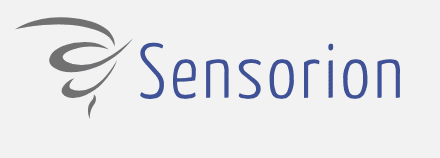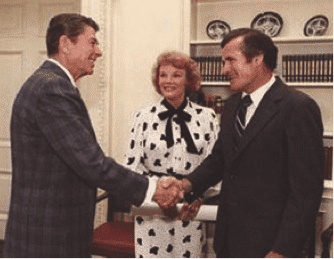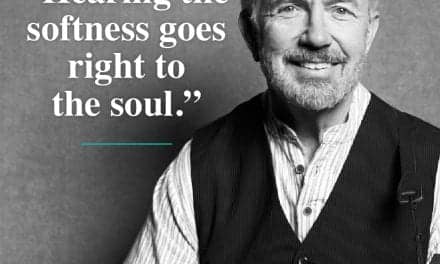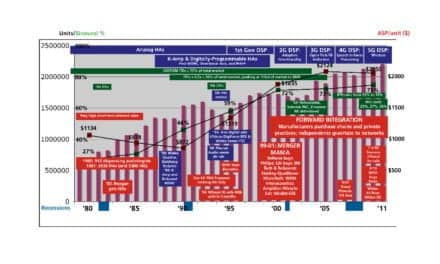Successes and the remaining challenges to gaining Congressional support and approval for the Hearing Aid Tax Credit Assistance Act (HR 414 and S 1060) were the focus of the Hearing Industries Association (HIA) annual meeting held February 23-24 in San Juan, Puerto Rico. Other industry initiatives discussed during the two-day meeting included a recent focus group funded by HIA to analyze “the consumer’s journey” in obtaining a hearing exam and hearing instruments, recent initiatives that have been undertaken by the Better Hearing Institute (BHI), and in-depth information about a range of issues, from state lemon laws to cell phone interference.
The Year of the Hearing Aid Tax Credit Assistance Bill
The HIA Board agreed that the association needs to focus its full attention on the passage of the Hearing Aid Tax Credit Assistance Act initiative, and characterized the year 2006 as the best chance for the industry to see this important legislation become a reality.

A total of 93 members of the US House of Representatives and 13 members of the US Senate have signed on as co-sponsors to HR 414 and S 1060. The bills are identical in content and would provide a tax credit of up to $500 per hearing aid to individuals ages 55 and older and families with dependents once every 5 years. The bills are designed to help older people and children better afford to treat their hearing loss.
According to HIA Executive Director Carole Rogin, the tax credit would help countless Americans who need hearing instruments but cannot otherwise afford them. Likewise, the benefits associated with reducing special education costs for children through increased hearing aid usage are immense, as are the benefits of minimizing psychological and mental disorders associated with untreated hearing loss in older adults. Estimates by the BHI indicate that untreated hearing loss negatively impacts the incomes of approximately 80,000 US households by up to $12,000 per year, and may account for a loss of over $18 billion in US taxes collected.

To date, virtually every professional and consumer organization that is associated with hearing health care has endorsed the two bills. In late January 2005, HIA named Rep Jim Ryun (R-Kan) “Representative of the Year” for introducing the legislation in the House. “HR 414, and its companion bill S 1060, are the first pieces of hearing-related legislation in decades that have the full support of virtually every organization in the hearing field,” Rogin says.

Sen Norm Coleman (R-Minn) introduced S 1060 in the Senate during “Hearing on the Hill,” which was held May 17-18 in Washington, DC. The event was sponsored by HIA, and supported by the “Friends of Hearing Health,” a large coalition of providers, consumers, and other national organizations interested in hearing care issues, including the American Academy of Audiology (AAA), American Speech Language Hearing Assn (ASHA), International Hearing Society (IHS), the Deaf and Hard of Hearing Alliance (DHHA), and Self Help for Hard of Hearing People (SHHH, now called the Hearing Loss Assocation of America).
According to HIA Director of Government Relations Andy Bopp, the bill is also getting an excellent reception in the 109th Congress, as evidenced by the 93 House co-sponsors (compared to a total of 68 co-sponsors during the 108th Congress). However, one of the key deciding factors, according to Bopp, will be how the bills fare in the powerful US House Ways and Means Committee chaired by Rep Bill Thomas, Bakersfield, Calif, and in the US Senate Finance Committee which is headed by Charles Grassley of Iowa (see sidebar on p 15). These two committees essentially serve as the gatekeepers to the passage of the tax bills, and gaining the support of members of each respective committee—and particularly the support of Thomas and Grassley—are critical.

Bopp says that few in Congress contest the merits of the bill, although some have expressed that they would like to see its eligibility broadened, while others are leery of any spending initiative that might add to the deficit. In fact, the largest obstacles to passage of the bill are the other pressing matters before the 109th Congress—including the war in Iraq, deficit spending and the need for more fiscal restraint, as well as other issues like energy, health care initiatives, and emerging political scandals during an election year.

Despite these national and political issues, Bopp expresses optimism that the tax credit stands a good chance for passage in 2006, because—beyond the obvious health benefits of the bill—it relies on “free market” forces that are widely supported by Congress and the Bush Administration, it complements the Health Savings Account (HSA) program while providing assistance for those least likely to benefit from HSAs, and it does not rely on costly, bureaucratic programs such as Medicare. While the tax credit provides assistance to the elderly, it does not eliminate patient choice relative to the consumer seeking out the best price/value of the hearing aid—another facet that jibes with the current health care philosophy of Congress and the administration. Finally, members of Congress are gearing up for the midterm elections in November, and legislative initiatives that appeal to a wide range of voters—particularly the powerful senior voting block—may be hitting the peak of their attractiveness. The tax credit certainly would qualify as a bill that has many “political upsides” with few downsides or detractors.

Other reasons for supporting the Hearing Aid Tax Credit Assistance Act, according to HIA include:
• While 95% of individuals with hearing loss could be successfully treated with hearing aids, only 22% (6.35 million Americans) currently use them according to the most recent MarkeTrak VII report (July 2005 HR), the largest national consumer survey on hearing loss in America. Included in this figure are 1 million children under the age of 18 with a diagnosed hearing loss who are not now using a hearing aid, and around 9.7 million Americans age 55 and over. (A Pediatric MarkeTrak is planned for publication in an upcoming issue of The Hearing Review.)
• Two in five (40%) individuals with hearing loss have incomes of less than $30,000 per year. A Department of Commerce study indicates that overall family income of the hearing-impaired population is almost half that of the general population.
• Almost one-third (30%) of those with hearing loss cite financial constraints as a core reason they do not use hearing aids, according to a MarkeTrak report.
• The average cost for a hearing aid in 2004 was $1,800, and almost two-thirds of individuals with hearing loss require two devices, thereby increasing the average out-of-pocket expense to $3,600.
• Hearing aids are not covered under Medicare, or under the vast majority of state-mandated benefits. In total, 71.4% of hearing aid purchases involve no third-party payments, which places the entire burden of the hearing aid purchase on the consumer, according to MarkeTrak statistics.
Bopp urged maximum participation from HIA members and the allied hearing health care community who were represented at the meeting by executives of the American Academy of Audiology (AAA), International Hearing Society (IHS), and the Academy of Dispensing Audiologists (ADA). “This is going to be a horserace until November when you basically have to start over again if you’re unsuccessful,” said Bopp, referring to the nation’s midterm elections.
Politics in an Election Year
Political commentator Charlie Cook presented his views on the midterm election in November, as well as the 2008 presidential election. A former writer for Roll Call and founder of The Cook Report, Cook serves as a frequent guest on ABC, NBC, and CNN. He presented a picture of a president who, with a 43% approval rating, is not historically in a good political position. However, he also portrayed a Democratic party that was unable to take advantage of the administration’s mis-steps, and faced poor odds for gaining a majority of seats in either houses of Congress.

With regard to the Hearing Aid Tax Credit, Cook believes that it is a palatable bill for all members of Congress. In view of the current election cycle, he believes most legislators’ reception to it will be: “Sure, why not? It’s a good date.” Cook says that writing letters and sending faxes are relatively ineffective; what is needed is for professionals and consumers to show up at local political engagements and town meetings attended by their representatives and pin them down with questions like, “Congressman, are you for or opposed to the Hearing Aid Tax Credit bill, and will you co-sponsor it?” Cook contends that this, and getting “face time” with a member of Congress, is the most effective way in which to influence their priorities.
New Officers and Awards
Special guests recognized at this year’s meeting included: Lucille Beck, director of Audiology and Speech Language Pathology at the Department of Veteran’s Affairs; ADA President Craig Johnson; AAA Executive Director Laura Fleming Doyle and Board Member Helena Solodar; IHS President Harlan Cato and Executive Director Cindy Helms; and European Hearing Instrument Manufacturer’s Association (EHIMA) Chair Jesper Mailind.

The association recognized Randy Raymond for his service during his tenure as HIA chairman. Raymond’s term was marked by efforts to gain passage of the Hearing Aid Assistance Tax Credit, and along with the assistance of Immediate Past-President Jerry Ruzicka, was instrumental in gaining good support for the measure in Congress.

HIA Executive Director Carole Rogin was also recognized for her commitment to HIA and for serving as the overseer of association initiatives. The HIA’s Board of Directors in 2006 was also announced at the annual meeting. It will consist of Chair Cathy Jones, Phonak; Immediate Past-President President Randy Raymond, Rayovac; Alan Dozier, GN ReSound; Jerry Ruzicka, Starkey Laboratories; Jeff Taylor, Sonion; and John Zei, Knowles Electronics.

|

|

|





